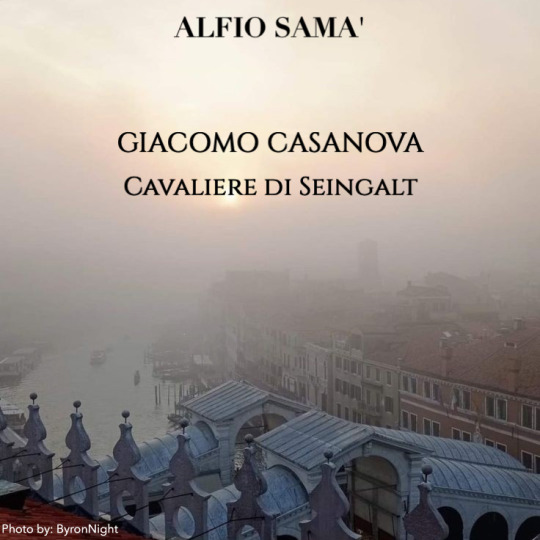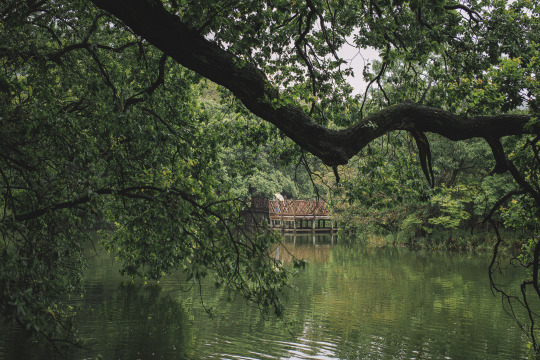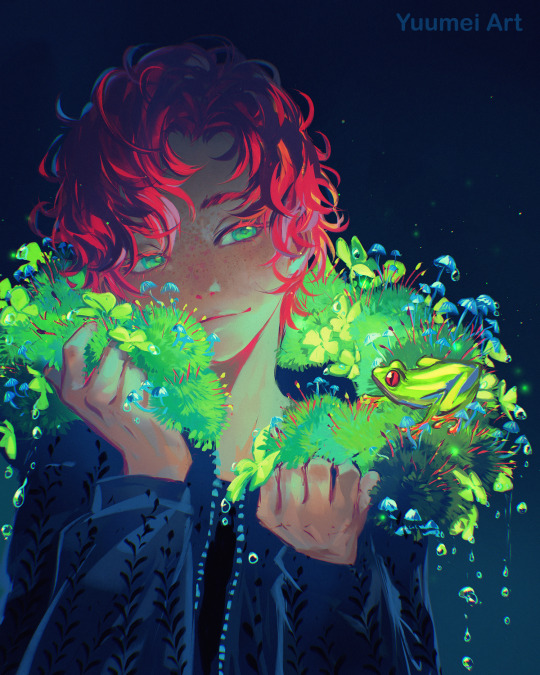"This above all: to thine own self be true, And it must follow, as the night the day, Thou canst not then be false to any man." ~ William Shakespeare sugarplumdancerdesigns.tumblr.com
Don't wanna be here? Send us removal request.
Text

Il Dies Irae del Requiem è nato per un puro caso. A volte le cose capitano per caso. O forse no. Il caso forse non esiste. Esiste però una volontà inconscia tanto forte da portarci là dove non penseremmo mai di andare. Tempo fa stavo rivedendo la partitura del primo movimento del concerto per archi De Profundis, che stavo scrivendo in quei giorni, e mentre nella mia testa riascoltavo quelle note mi sono reso conto che il pezzo avrebbe benissimo potuto essere il Dies Irae che da tempo pensavo di aggiungere al Requiem. Così, senza pensarci due volte, ho aggiunto il coro e modificato la struttura degli archi. L’originario brano per archi, però, mi piace troppo per rinunciarvi, e così scriverò anche il secondo e il terzo movimento. Per il momento, propongo il Dies Irae.
The Dies Irae of the Requiem was born by pure chance. Sometimes things happen by chance. Or maybe they don't. Chance may not exist. There is, however, an unconscious will so strong that it takes us where we would never think of going. Some time ago I was reviewing the score of the first movement of the string concerto De Profundis, which I was writing those days, and as I was listening again in my head to those notes I realized that the piece could very well have been the Dies Irae that I had long thought of adding to the Requiem. So, without a second thought, I added the chorus sections and modified the strings structure. However, I like the original string composition too much to give it up, and so I will also write the second and third movements. For now, I here propose the Dies Irae.
155 notes
·
View notes
Text

Tempo fa, e precisamente il 5 Luglio di questo stesso anno, pubblicai il 3° movimento del concerto n.9 per Violino e Archi in La minore. Quel terzo movimento il cui tema avevo annotato frettolosamente mentre ero in visita a Praga anni addietro. Deciso a non lasciarlo in sospeso e orfano degli altri due movimenti, ho finalmente terminato il concerto. Ne pubblico ora tutti e tre i movimenti. Per coerenza, e per non generare confusione, ho preferito lasciare la stessa copertina della precedente pubblicazione ma con le indicazioni agogiche (Allegro - Grave - Allegro assai) di tutti e tre i movimenti. ··········· Some time ago, on 5 July to be specific, I published the 3rd movement of Concerto No. 9 for Violin and Strings in A minor. That third movement whose theme I had hastily jotted down while visiting Prague years ago. Determined not to leave it hanging and orphaned of the other two movements, I finally finished the concerto. I now publish all three movements. For consistency, and so as not to cause confusion, I have preferred to leave the same cover as in the previous publication but with the agogic indications (Allegro - Grave - Allegro assai) of all three movements.
188 notes
·
View notes
Text
youtube
THE ARTHURIAN CYCLE
Lancillotto e Ginevra. Un altro amore illecito, forse il più eclatante del Ciclo Arturiano. Un amore impossibile da reprimere, e questa volta non dovuto a una pozione d’amore, come nel caso di Tristano e Isotta, ma scaturito dalla precisa volontà dei due amanti. Un amore che lentamente porterà alla rovina sia i due infelici amanti che la stessa corte di Camelot. La musica esprime tutto il dolore, le malinconia e il senso di solitudine, ma anche tutta la disperata dolcezza che alberga nei due cuori travolti da un destino al quale non sanno opporre altro che la loro ardente e travolgente passione. ——————— Lancelot and Guinevere. Another illicit love, perhaps the most impressive in the Arthurian Cycle. A love impossible to repress, and this time not due to a love potion, as in the case of Tristan and Isolde, but arising from the precise will of the two lovers. A love that will slowly lead both the two unhappy lovers and the court of Camelot itself to ruin. The music expresses all the pain, melancholy and sense of loneliness, but also all the desperate sweetness that dwells in the two hearts overwhelmed by a destiny to which they can oppose nothing but their ardent and overwhelming passion.
173 notes
·
View notes
Text

Photo by: byronnight2.0
Di Giacomo Girolamo Casanova (1725 - 1798) si ricordano solo gli innumerevoli amori, le fughe, i tradimenti, i duelli, ma egli fu soprattutto un uomo con una sensibilità particolare che gli permise di spaziare in tanti campi diversi con quasi uguale maestria e profondità. Casanova fu un abile scrittore. E fu un poeta. E un filosofo, uno scienziato, un esoterista e alchimista. E non in ultimo, un diplomatico e agente segreto. Per circa due anni - dal 1744 al 1746) fu anche secondo violino al Teatro San samuele di Venezia. E pochi sanno che in gioventù prese anche gli Ordini Minori. Casanova amava Venezia, ma non riuscì a viverla come avrebbe voluto. Nella sua vita, infatti, affrontò due esili a seguito dei quali visse in svariate corti europee, venendo così a contatto con culture diverse che arricchirono il suo spirito e il suo sapere. Questo brano è dedicato a lui e alla sua Venezia, città che egli custodirà sempre nel suo cuore durante i suoi lunghi viaggi in Europa, città lontano dalla quale morirà nel 1798, a Dux (Duchcov) in Boemia, presso la corte del Conte di Waldstein, ove lavaorava come bibliotecario. —————————— About Giacomo Girolamo Casanova (1725 - 1798) one remembers only his countless loves, runaways, betrayals, and duels, but he was above all a man with a special sensibility that allowed him to range over many different fields with almost equal skill and depth. Casanova was a skilled writer. And he was a poet. And a philosopher, a scientist, an esotericist and alchemist. And not least, a diplomat and secret agent. For about two years-from 1744 to 1746) he was also second violinist at the Teatro San samuele in Venice. And few know that in his youth he also took the Minor Orders. Casanova loved Venice, but he was unable to live it as he would have liked. In his life, in fact, he faced two exiles following which he lived in various European courts, thus coming into contact with different cultures that enriched his spirit and knowledge. This composition is dedicated to him and to his Venice, a city he would always cherish in his heart during his long travels in Europe, a city far from which he would die in 1798, in Dux (Duchcov) in Bohemia, at the court of the Count of Waldstein, where he was working as librarian.
150 notes
·
View notes
Text
youtube
Con Tristano ha inizio la pubblicazione di una serie di brani dedicati al Ciclo Arturiano. Tristano, la cui storia nel corso dei secoli ha sempre trovato difficile collocazione nel tessuto etico e umano imposto dalla società - oltre che valoroso cavaliere di Artù e membro della Tavola Rotonda, insieme a Isotta è anche il simbolo dell’amore folle e impossibile che vive di sotterfugi, delle altissime vette della passione e dell’inevitabile tragico epilogo che a volte tocca a coloro che, pedine inconsapevoli di un destino quasi beffardo, tentano di appagare la loro felicità a ogni costo. Un amore che, seppur non cercato, si eleva a dignità di immortale memoria, divenendo nei secoli l’emblema di coloro che vogliono amarsi sfidando il destino e il mondo intero. Tra qualche giorno sarà il turno de I Riti Di Beltane, un brano che rievoca una festa pagana di origine celtica che è stata anche il rito di iniziazione del giovane Artù, futuro re della Britannia. ———————— With Tristan begins the publication of a series of pieces dedicated to the Arthurian Cycle. Tristan, whose story over the centuries has always found it difficult to fit into the ethical and human tissue imposed by society - in addition to being Arthur's valiant knight and a member of the Round Table, together with Isolde he is also the symbol of the crazy and impossible love that depends on subterfuge, of the highest peaks of passion and of the inevitable tragic epilogue that sometimes befalls those who, unaware pawns of an almost mocking destiny, try to fulfil their happiness at any cost. A love that, although not pursued, rises to the dignity of immortal memory, becoming over the centuries the emblem of those who want to love themselves, defying fate and the world. In a few days it will be the turn of I Riti Di Beltane, a music track that evokes a pagan festival of Celtic origin that was also the initiation rite of young Arthur, future king of Britannia.
138 notes
·
View notes
Text

Sketching on the deck, listening to the rain
#pascalcampion
935 notes
·
View notes
Text

good morning bakery 🍞🥖
instagram | shop | commission info
7K notes
·
View notes
Text














2023-08-19
In the morning
Canon EOS R10 + RF28mm f2.8 STM
Instagram | hwantastic79vivid
3K notes
·
View notes
Text

when did I become so reserved was it all the times you put me down or denied me truths about myself was it this fear that I hated for the breaths that I take for the existence I didn't ask for I am no longer myself who am I? can't say I know, not anymore
53 notes
·
View notes





